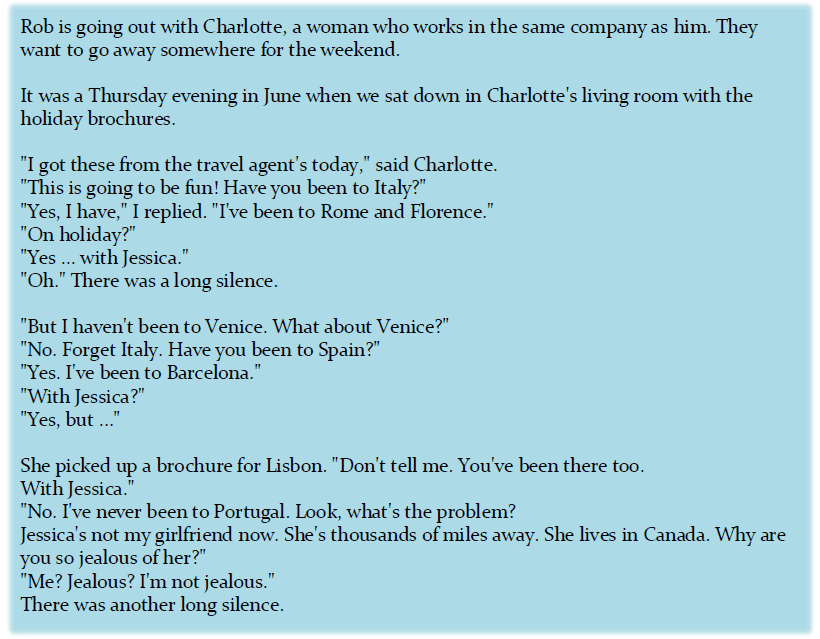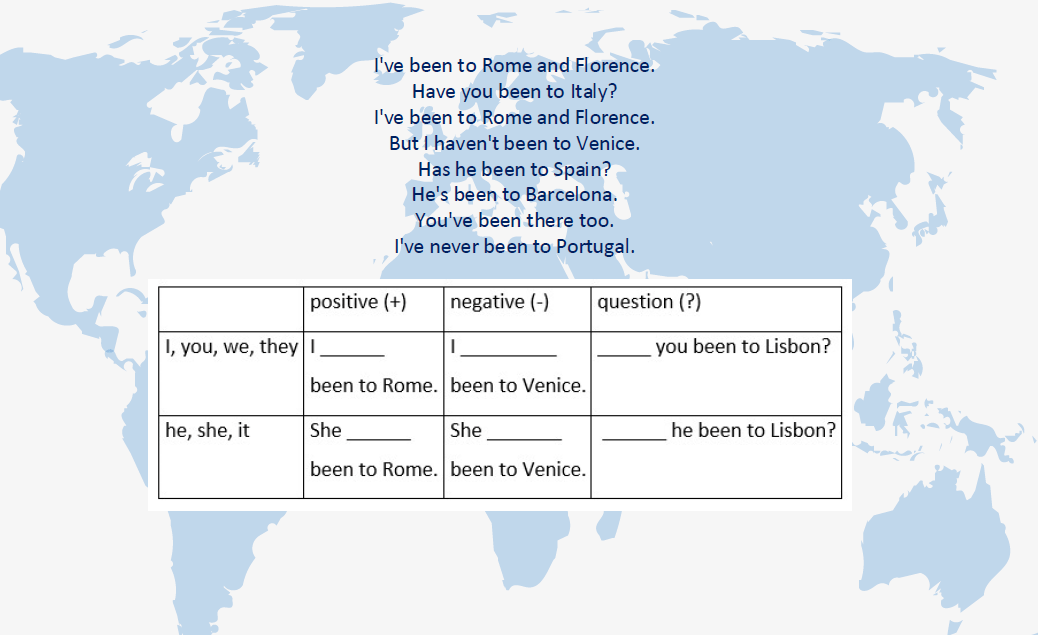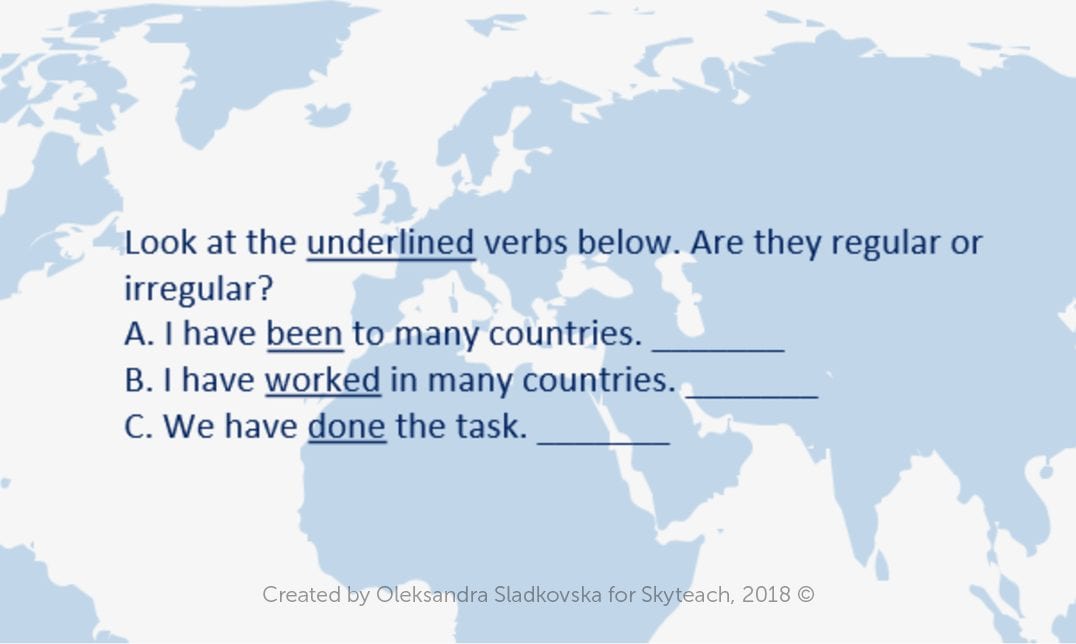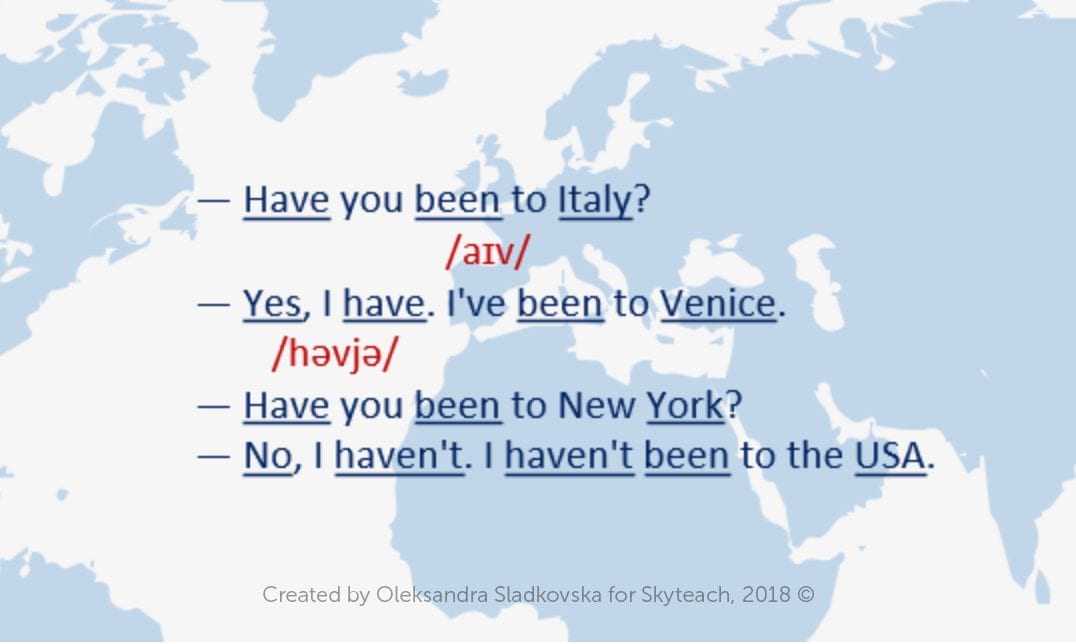What teacher doesn’t want their students to become autonomous and able to solve the mysteries of the foreign language on their own? One way to do it is to encourage them to explore the language independently whenever they can. However, it is easier said than done. Students may not know how to do it. What is the solution? To teach them how to do it! In this article, I will share one of the most common ways to students’ independence in learning, namely, guided discovery.
What is “guided discovery“?
Guided discovery is an approach to teaching a language item. It consists in the providing students with an example of the target language item in a meaningful context, and then, helping learners to figure out the rule through a series of guiding questions and appropriate tasks. The technique is considered to be efficient and student-centered. The collaboration of students promotes speaking and critical thinking. The results achieved in this way will be more memorable and meaningful for the student, and as such, easier to use in practice later on.
This approach removes the teacher from the pedestal of a continuous “explainer“ of the rules and turns one into a facilitator whose role is to help, guide and promote learning. The explainers, in this case, will be your students. However, not knowing how to find out the pattern they need, or where the starting point to all this is, they are provided with a set of activities and assistance from the teacher to attempt to figure out the rule for themselves.
How does it work?
I am going to outline the stages of this approach on the example of presenting grammar. Let’s say you want to present the Present Perfect to an Elementary student. First of all, you need to choose a suitable context for this. The best way is to use a text provided by your coursebook or make up your own story (if you are creative enough). Here is the text I will use.

After you have worked with the text and the students know the context well, it is time to draw their attention to the target language. Choose one model sentence from the text in order to analyse it with the students. For example, this one:
I’ve been to Rome and Florence
First, you need to work out the meaning of this form. Use guided discovery for this. You need to formulate the rule for yourself first (when preparing for the lesson), and then create the guiding questions based on it. These are some ideas:

These questions will help to work out the meaning. Complete this stage by stating the rule:
“We use Present Perfect for actions that happened (or experience) in the past but we don’t know when exactly”
Then, you need to work out the form with the students. You can do it through guided discovery as well. Add more examples of Present Perfect in different forms and let students try to analyse them on their own. You can do it by offering some questions to the model sentence first:
What verb is “ve“?
What verb is “been“?
Then offer them more examples and a chart to try and complete:

This task will help the student to figure out the basic form. You can help them with the task after they have tried it on their own. You can also formulate the rule like this: S + have/has + V3 or V-ed. Additional suggestions is to work on the verbs, for example, like this:

The last stage is to work on pronunciation of the whole sentence. You can ask students to highlight the stressed words, linking, some peculiar cases of pronunciation after listening to you or the recording. Then you model and drill the pronunciation. For instance, for the model sentence you can use this:

This is the end of guided discovery. At this point you can go to the rule page in your coursebook and go over the main points of the rule again. Also, do not forget to ask CCQs to make sure your students got the rule.
Why bother?
Why do we need tasks like this? There are many reasons and here are some of them:Guided discovery makes lessons more student-centered, learners are more involved in the process and invest more effort into such activities.
- They are more engaging and you will prevent learners from dozing off during your explanation. They will solve this puzzle on their own and be more attentive when it is time for you to clarify.
- Grammar presented in this way will be more memorable as students were more engaged in the process of the clarification of the rule.
- Students become more responsible for their own knowledge, they became more aware of what is going on in the lesson and they will be able to transfer this experience to their own out-of-class learning.
- Finally, it all leads to autonomous learning. Having seen what it takes to figure out the meaning and the form of a structure, they will be able to learn continuously on their own, improving their English even when we are not there for them.
To sum it all up, guided discovery technique is one of the most popular in the communicative approach. It is an effective and student-centered way to present the target language which will engage your students, make it a more memorable and valuable experience for them, and make them independent learners in the long run. Eventually, your students will be able to improve their English efficiently outside the classroom and make you proud of them 🙂
Have you tried this technique? Which topics work best with it? What problems have you encountered? What was your students’ reaction?
Tell us your stories in the comment section below!





 Вероника Аветисян
Вероника Аветисян 
 Маргарита Аветисян
Маргарита Аветисян 



consist OF something
Everything is OK with the preposition. To consist in something means ‘to have something as a main and necessary part or quality’. Alexandra, thanks for sharing.
why did you use prep TO instead of «in»?
I have been TO Rome/ I have been IN rome?
In seems more natural..
«I have been to Rome» means he went there and came back home.
«I have been in Rome» means he is still there. For example: I have been in Rome for 3 weeks.
I’ve been to Rome — means I was there and came back
I’ve gone to Rome — means I’m still there
We use here the preposition TO according to the grammar rules in such constructions:
Have you ever been to Spai? (NOT «in Spain» — it is a mistake)